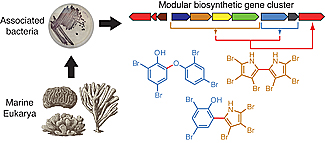
Nature Mimics Flame Retardants?
Some marine bacteria produce potent persistent organic compounds that are nearly identical to flame retardant chemicals.
Researchers at the University of California, San Diego School of Medicine have discovered a widely distributed group of marine bacteria that produce compounds nearly identical to toxic man-made fire retardants.
Among the chemicals produced by the ocean-dwelling microbes, which have been found in habitats as diverse as sea grasses, marine sediments and corals, is a potent endocrine disruptor that mimics the human body's most active thyroid hormone.
The study is published in the June 29 online issue of Nature Chemical Biology.
Although the presence, persistence and ability of PBDEs to accumulate in the fatty tissues of marine animals have long been recognized, researchers had previously believed the compounds were anthropogenic in origin and due to ocean pollution.
More recent examinations have shown a pervasiveness of PBDEs in prey and predatory species, suggesting a natural microbial source of the compounds as well as an anthropogenic one.
The study is the first to isolate and identify bacteria that synthesize these compounds and whose presence may help explain the observed distribution pattern of PBDEs in the marine food chain.
"We find it very surprising and a tad alarming that flame retardant-like chemicals are biologically synthesized by common bacteria in the marine environment," said senior author Bradley Moore, PhD, a professor at the UC San Diego Skaggs School of Pharmacy and Pharmaceutical Sciences and Scripps Institution of Oceanography.